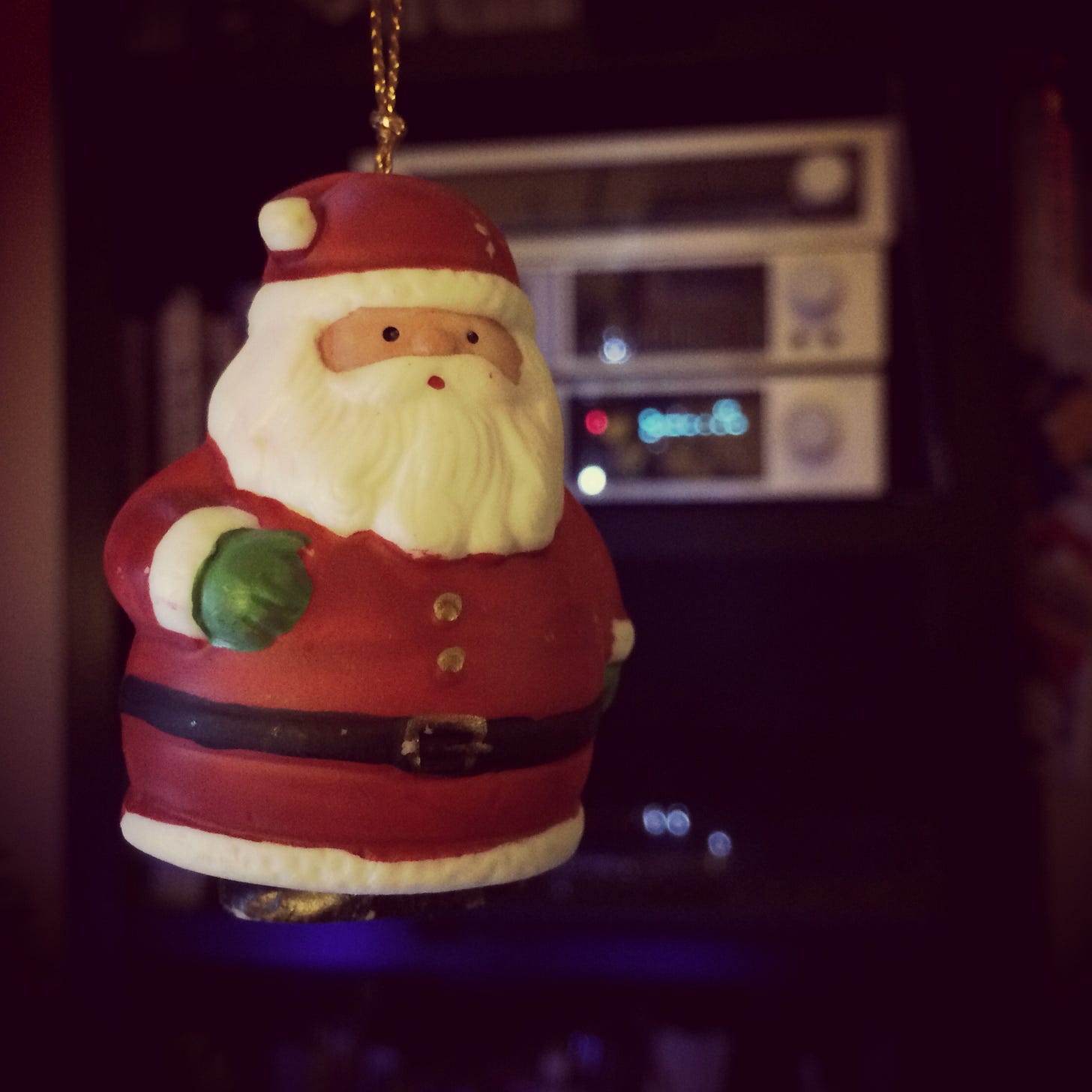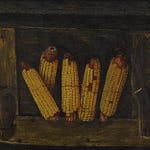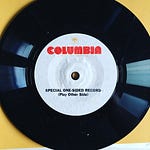It’s Christmas again. I like this time of year just fine but I feel the weight of that “again.” It’s been on my mind a lot, especially as the years keep running together. It feels like this is the third Christmas of 2020.
Again.
I should look at it differently. After all, repetition is part of tradition—an important part. Something that happens once can’t be called a tradition. Neither can something that happens every day. A tradition is a routine with celebration. It’s a habit with meaning; a set of rules we look forward to following. Ceremony separates it. Repetition grounds it.
This is fertile ground for the insouciant human desire to shake things up. There’s always someone who wants to do it a little differently—try a new cookie recipe, put a techno remix on the playlist, give experiences instead of gifts. And no seed takes root more easily than one that expands the tradition. This is the likely unconscious aim of every uncle who ever got a little bored around the Christmas television and dropped a chestnut like “Die Hard is really a Christmas movie.”
But even older than any factoid that might get a Nakatomi Plaza ornament on the tree is the insight that follows a gentle nudge while “Have Yourself a Merry Little Christmas” plays in the background.
“You know,” someone says in the tone that accompanies the imparting of forbidden knowledge. “This is really a sad song.”
Then it clicks. It clicks before they can tell you the history, how it’s about a last Christmas in a beloved hometown1, how the lyrics are actually “Someday soon, we all will be together, if the fates allow. Until then, we’ll have to muddle through somehow.”
The song is sad on the surface, too. It’s slow and plaintive. It makes the day diminutive, a “little Christmas.” And the singer won’t be celebrating with you, because you need to make it for yourself. Have yourself a merry little Christmas. I’ll be crying in the egg nog.
A few minutes of thought and so many Christmas songs become sad. There’s the air of nostalgia for lost days in “White Christmas.” “I’ll Be Home for Christmas” is a soldier’s letter home. “O Tannenbaum” is usually played a little slowly considering it’s a song that celebrates a beautifully appointed tree.
The wistful threads in all these run back to the oldest and most traditional Christmas songs. “Silent Night,” “The First Noel,” and “Away in a Manger”—to name a few—are downtempo and sad. But the tempo is a symptom of a more profound melancholy. As someone who didn’t up with religion, I can’t speak to the spiritual weight of these songs, but the lyrics have the mix of hope and worry that permeates throughout the season. These are songs about people searching for something. They search regardless of their status. They could be kings or kids with nothing but a drum. They travel across the desert in their search All of their hope is tied up in a rumor. There’s a straining and striving, a desire to give everything for something whose certainty is made by fervent belief.
These themes—longing, emptiness, desire for change—resonate with modern songwriters. As holiday celebrations secularized, the dream of peace on earth and goodwill toward man changed from the hope of a faithful few to the humanist dream of the masses. Stevie Wonder’s “Someday at Christmas” and John and Yoko’s “Happy Xmas” are anti-war protest songs.
Other songs are more personal in their heartache over dashed hopes for kindness. “Blue Christmas” is self-explanatory in title alone. John Prine’s “Christmas in Prison” continues the sad longing inherent to the season. It’s framed as a prisoner writing a letter to the outside expressing thankfulness (“the food was real good”), longing (“I dream of her always, even when I don’t dream”), and a recognition of the impossible (“I’ll probably get homesick, I love you, goodnight”).
Even the songs that celebrate the most crass or commercial elements of the yuletide have something darker beneath. “I Saw Mommy Kissing Santa Claus” might be cute to grownups, but the child narrator is learning that either infidelity is real or Santa isn’t. Mariah Carey’s “All I Want for Christmas Is You,” a song that’s cheerful and fun on the surface, is about unattainability and solitude. The narrator of the song is alone on Christmas. She can have everything but just wants another person to be with. She wants that person more than they will ever know.
It’s a holiday of giving where everyone wants something that can’t be bought. The day of gifts reminds us of the limits of our purchasing power. As kids, we so often want things that are real—toys. Things we can touch and own and play with but things that Santa might not be able to make or our parents might not be able to afford. The objects of our desire change, but our knowledge that we’ll never get everything we want only grows. The day is a mix of wanting everything, hoping for something, and knowing anything is a gift. As adults, we understand this, even if we don’t want to admit it every year.
As a kid, my parents used to put on A Christmas Together by John Denver and the Muppets around the holidays. It’s a tradition I’ve kept into adulthood. The smiling folk singer surrounded by mirthful muppets on the album cover is no preparation for the complexities within, especially the third song: “The Peace Carol.” It starts with the lyrics “The garment of life, be it tattered and torn” and closes with a verse that holds the key to why Christmas songs are sad.
Add all the grief that people may bear
Total the strife, the troubles and care
Put them in columns and leave them right there
The peace of Christmas Day
This is the same spirit as “Have Yourself a Merry Little Christmas.” It’s the thesis of every sad Christmas song. There are troubles. There is pain. Let’s try and make the world a little better for others. And let’s put aside the rest of our worries as best we can. Let’s wish for it to be different and pretend that it could really be different, if just for the day.
Christmas is indeed little in the grand scheme of the year. We can stretch the season as far into October as we want but when it comes down to it, it’s one day. This one day is a break in the routine. It’s a time for tradition. Everything is cold and dead outside. That’s routine. But taking a step out of the routine doesn’t make it go away. From that distance, we can see what it is. On Christmas, we face the reality that the last year wasn’t everything we wanted2 and we greet the prospect that next year will be the same. No matter what changes, it will bring us back here, surrounded by gifts and loved ones and sitting with the knowledge that it’s going to be a long journey around the calendar. So let’s take a little break.
Nothing is truly static. Not even traditions. We repeat actions and words and deeds, but as we age, the places we go and people we see will change. The numbers around the table grow and shrink and we get a little reminder every year that it’s not always going to be like this. Doing something again and again reminds us of how things have been and how they can be. We’re different people each year. Having a holiday tradition reminds us of the parts of life, and of ourselves, that are continuous, and the parts that aren’t.
Accept it. Celebrate it. Again.
Programming Note: I’ll be taking some time off for the holidays. I’ll be back with another essay in a couple weeks, and I hope to have an update or two in the meantime.
St. Louis!
“So this is Christmas…and what have you done?”
















Share this post